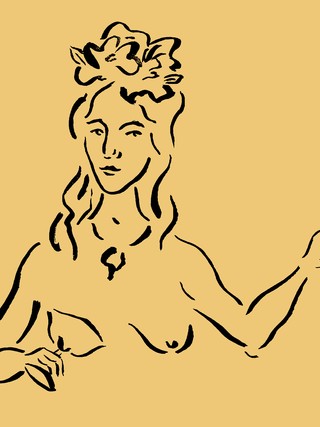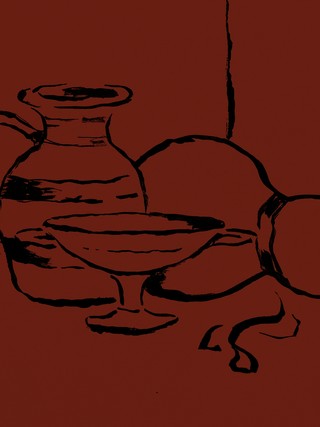VNTNRTM
VNTNRTM
VNTNRTM connects makers drinkers & thinkers in the pleasure of wine

Of Knights and Kingsby Sophie Otton
Illustration by Melia Tandiono

Sweet Wines of Antiquity
Sweet wines have, for centuries, been considered the pinnacle of indulgence. In the ancient world they are, quite literally, the stuff of legends; their mythical status woven through the writings of the great poets and philosophers of antiquity. From as long ago as the 8th Century BCE, references to these wines recur throughout classical literature, and by the tone it’s obvious that they were considered quite remarkable.
The earliest sweet wines that we know of today all come from around the Mediterranean, where the hot sun and dry climate are ideal for ripening grapes. There was just one drawback. The central action of vinification has a moderating effect on the sweetness of the fruit: as the yeasts convert those delicious grape sugars to alcohol, so the wines become less sweet as they ferment. To produce a wine then, that is both an alcoholic elixir while remaining sweet and delectable, a ‘honey-sweet wine’ as the great Greek bard Homer expressed it, has been one of the foremost achievements of winemakers through the ages.
Way back then, the simplest way to make such wine was to increase the level of sweetness in the fruit, which could be done by harvesting as late as possible to maximise ripening. The isle of Lesbos (among others), for instance, was famous for its production of protropon (sometimes referred to as Pramnian, but not to be confused with the dry, strong Pramnian wine of Icaria), where overripe grapes were piled high and free-run juice extracted as the grapes are pressed under their own weight; the classical precursor of the today’s exquisite Tokaji Essencia.
But early winemakers also knew that drying the grapes to some extent would decrease their moisture content, thereby increasing the concentration of sugars. This could be achieved in a number of ways. Most simply, the stem could be twisted or slit just above each bunch, so the grapes dry out while still attached to the vine. Conversely, the fruit could be picked and then dried in the sun. This method was widely used and is frequently referred to by ancient scribes.
"To produce a wine then, that is both an alcoholic elixir while remaining sweet and delectable, a ‘honey-sweet wine’ as the great Greek bard Homer expressed it, has been one of the foremost achievements of winemakers through the ages."
In The Odyssey, Homer tells of Ulysses walking wondrously through the gardens and orchards of Phaeacia (probably Corfu), entering a teeming vineyard with grapes lying in the sun and drying to raisins, to be tramped in the vats. Homer’s lesser-known contemporary Hessiod describes more clinically how the grapes are laid out and dried in the sun for ten days and nights and for a further five days in the shade. Roman naturalist and philosopher Pliny the Elder also describes the same process in his writings, and the wine is variously mentioned by Horace, Virgil and Cato as well, so we know that the Greek methods were admired and subsequently adopted by the Romans.
In ancient Carthage, passum was a dried-grape wine produced there and exported around the Mediterranean. Mago was a Carthaginian writer who recorded an extensive agricultural manual, since lost but surviving through summaries by subsequent Roman authors like Collumnella. His instructions for the production of passum include the harvesting of well-ripened grapes, the removal of damaged grapes, and the drying of grapes in the sun during the day while covering them by night to keep the dew off. Dried-grape wine made in modern Italy is known today as passito, an etymological derivative of the word passum.
Likewise, the sweet wine that we know today as commandaria has been produced in Cypress for about three thousand years or more. Today it is often fortified, but Hessiod’s contemporaneous account accurately describes the first stage of its production, with the grapes laid out on straw mats to dry in the sun. This is still how it is made. It was known as Cypriot manna when the crusaders first encountered it after they took control of Cypress in 1191, and it was served at Richard the Lionheart’s wedding there, where he reputedly proclaimed it ‘the wine of kings and the king of wines’. The Knights Templar were so taken with it, for they’d surely never encountered anything like it before, that they ensured their supply by making their main command post at an estate where it was made, hence the wine’s renaming to ‘fortified’.
Its tantalising to imagine, saturated as we are with sugar in the 21st Century, how it must have felt to taste for the first time a wine that was at once both deliciously sweet and wondrously intoxicating. It must have seemed, literally, to be ambrosial, the nectar of the gods.



